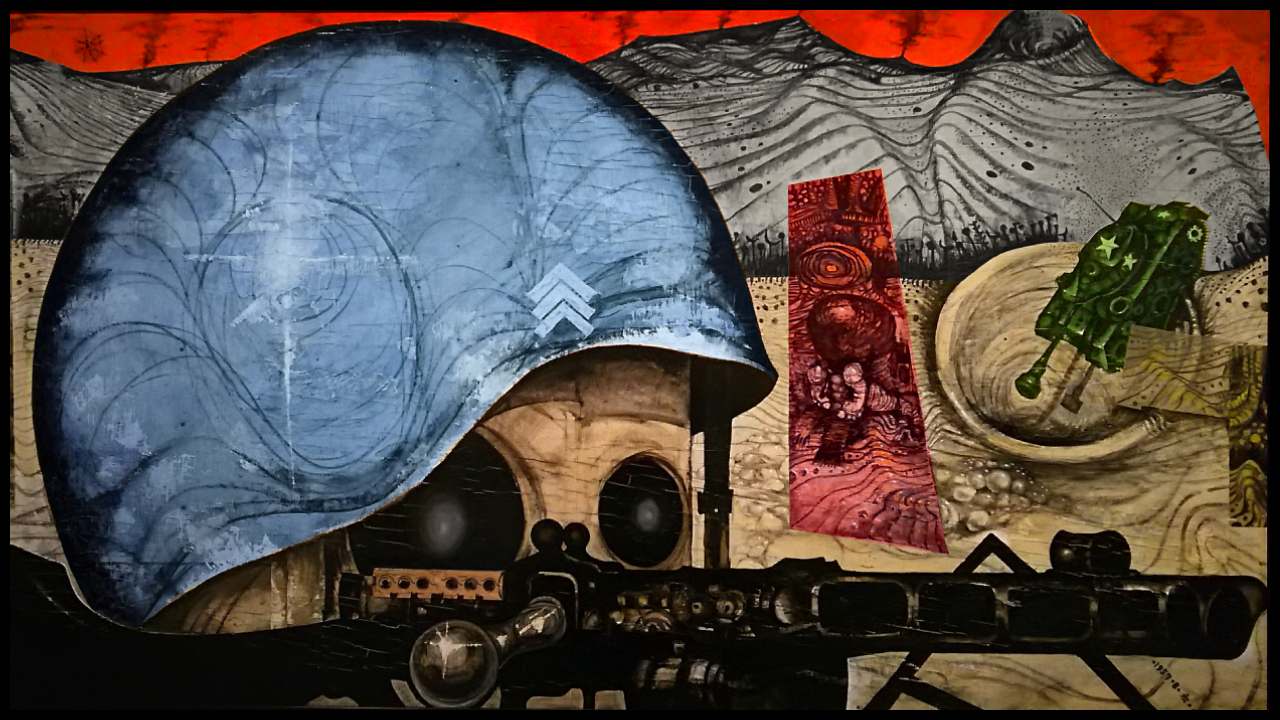The Small Town Which Ruined Russia's Big Plans on Odesa
Written on May 19th, 2024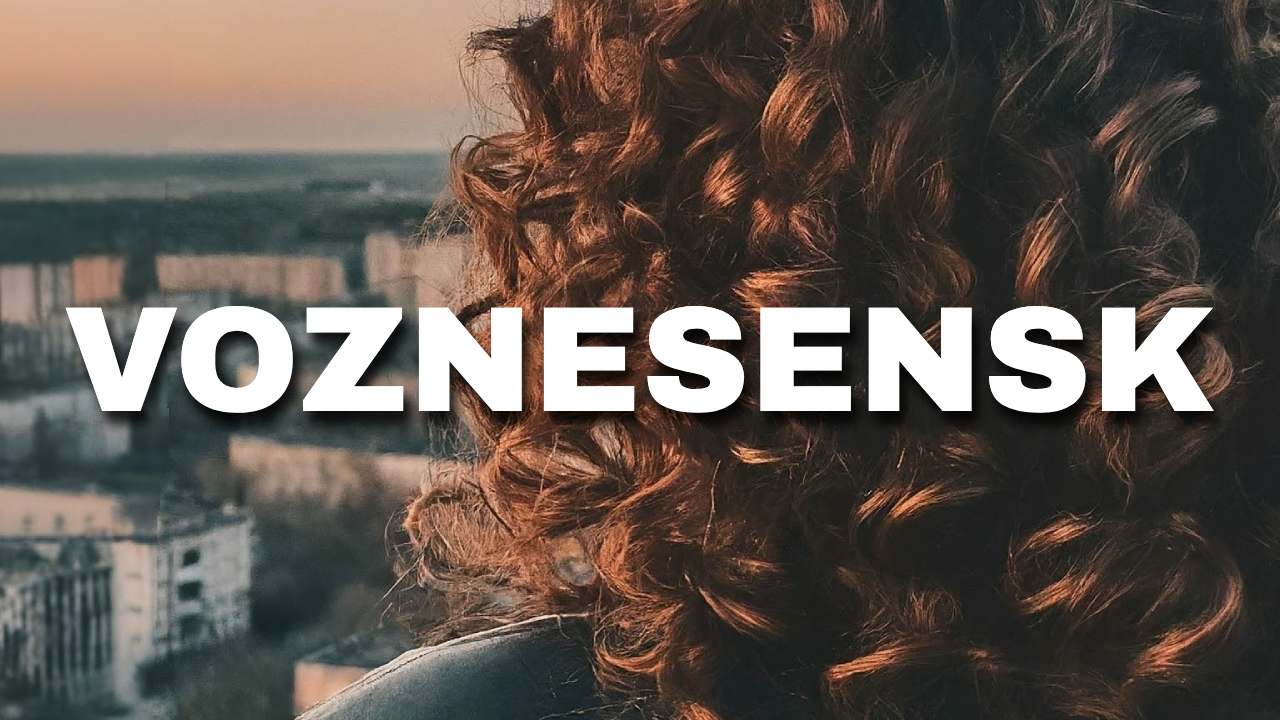
- Foreword
- Invasion and Escape Under Russian Fire
- Evacuating the Children and School
- A Personal Message of Hope and Gratitude
- Afterword
Foreword
A few months back, when I was in Ukraine, I visited a school together with the Colors of Hope foundation. This school is in the little town called Voznesensk, it’s in Mykolaiv region of Ukraine.
It’s a school for children facing different challenges: those without parents, those whose parents have lost parental rights, kids whose parents work shifts or multiple jobs and can’t be there during the week, and children with special needs.
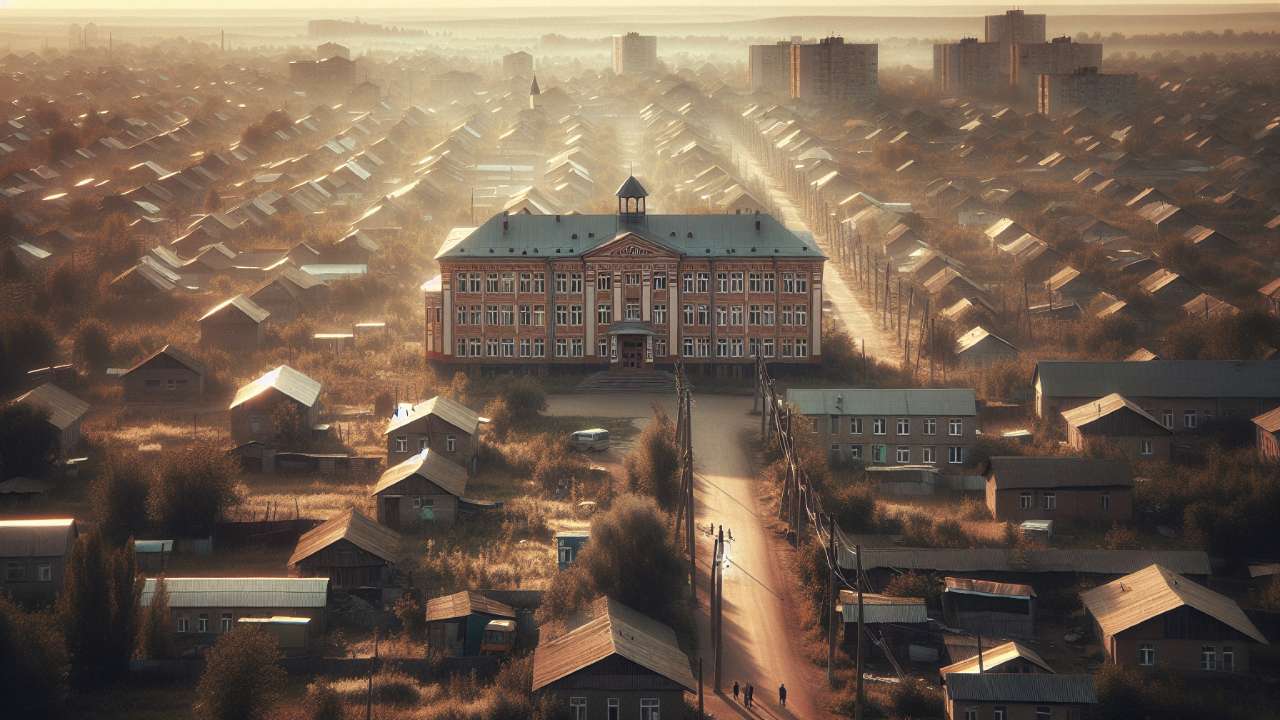 Symbolic image of the school in Voznesensk
Symbolic image of the school in Voznesensk
Chances are, you’ve never heard of this place. It’s quite small, with a population of around 33 thousand before Russia’s full-scale invasion. Yet, I believe more people should know about it, because the bravery of its residents played a crucial role in protecting the port city of Odesa and the western part of Ukraine’s South.
In early 2022, Russian forces attempted to advance through the city of Voznesensk in two directions. One objective was to seize the nuclear power plant located north of the town. Had they succeeded, it would have become a formidable stronghold, as no rational force would risk using heavy weapons to retake such a site.
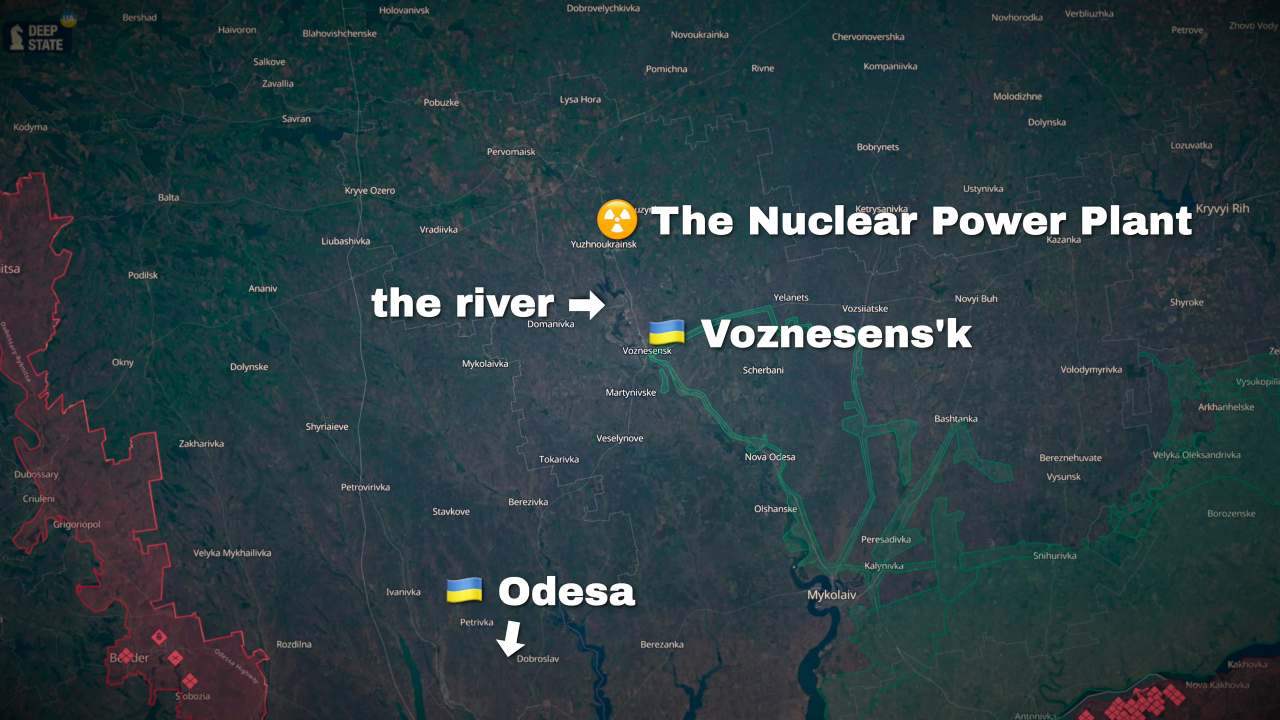 Voznesensk and Russian strategic objectives
Voznesensk and Russian strategic objectives
The second group aimed to cross the river, cutting off and surrounding Odesa. With Mariupol already under siege at that time, this would have meant Ukraine losing all its southern regions, access to the sea, and leaving millions of people vulnerable to forced evictions, deportations to Siberia, and worse: many of the horrors we now witness in the occupied territories.
Since 2023, the Colors of Hope charity foundation has been supporting the school. I joined during one of their visits to the school, and spoke with the principal, Natalia Horonzhuk, where I had the chance to ask her about the start of the Russian full-scale invasion in 2022.
Here’s her story, with my loose translation for easier reading.
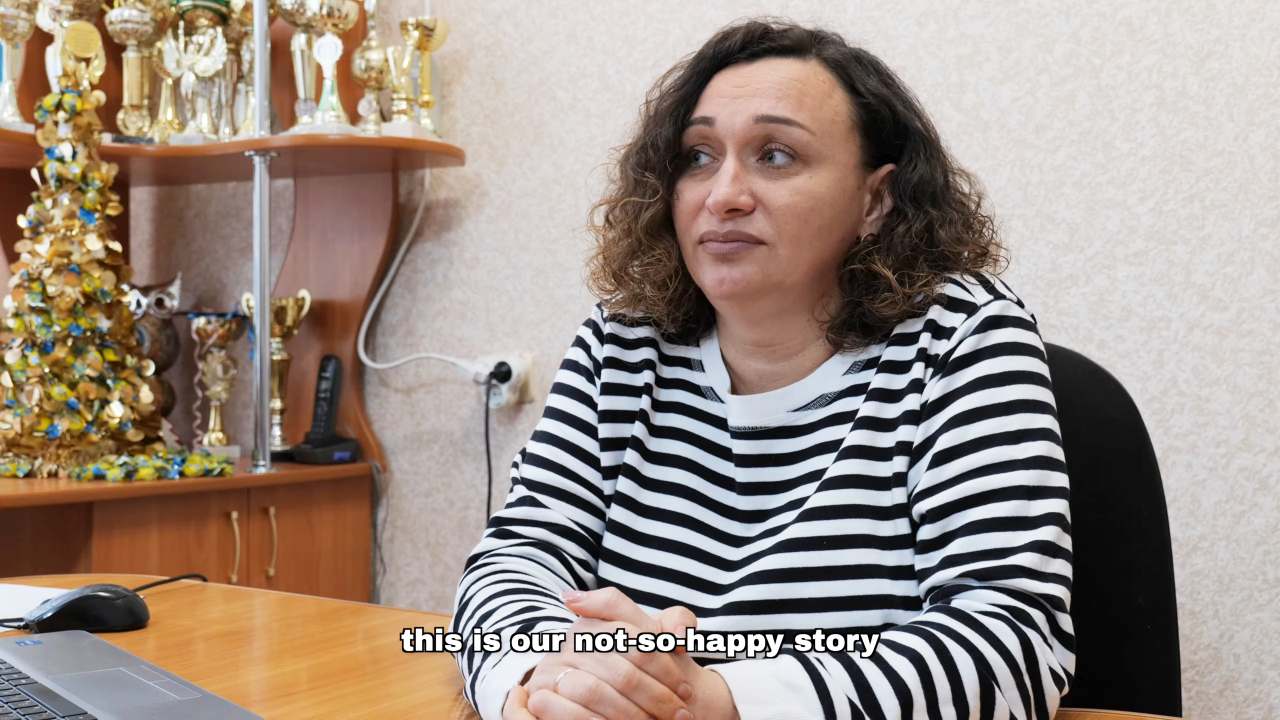 You can watch the full interview with subtitles here.
You can watch the full interview with subtitles here.
Invasion and Escape Under Russian Fire
It all happened so fast. It seemed like they just wanted to completely surround the town. They came in from 2 directions, from Mykolaiv and from the Kryvyi Rih highways, huge columns, maybe 80 vehicles of all sorts.
For a few days, we were under occupation, especially the part of town where the bridge was blown up. People there were trapped. The soldiers just barged into houses, breaking down doors with tanks. They couldn’t stay crammed in every yard, of course, so there was always some kind of military vehicle parked around. People hid wherever they could, mostly in basements. Imagine: it was freezing cold [in February].
On the third day, I think, a coordination center was formed really quickly. Negotiations were made, and they allowed women and children to leave. We have a pedestrian bridge in our town, and they let them cross over that part. They couldn’t bring anything with them, just whatever clothes they had on. People walked to the other side of town, where the Russians hadn’t been able to get in.
There was heavy fighting there. We had the 80th Brigade and a few other brigades – they basically stopped the whole thing cold. Thanks to them, the Russian push towards Odesa got choked off right here in our town, Voznesensk.
It’s like an open door to Odesa, that’s how they planned it. A quiet little town they thought they could just waltz through. They figured Mykolaiv would be surrounded then, and if they reached Odesa, Mykolaiv wouldn’t have mattered anymore. There wouldn’t have been any point to fight, being besieged then.
 Green shows territories Ukraine recaptured during the 2022 counter-offensive
Green shows territories Ukraine recaptured during the 2022 counter-offensive
But thanks to all the guys, our territorial defense played a huge role here, they basically stopped that whole column at the very beginning. Our guys from territorial defense at first, and then everyone else joined in. There were tragic events too, of course. Many from the Brigade perished, and many from our territorial defense too.
A lot of them were stationed around the city perimeter before the occupation even started. My own brother was at one of those posts, with about 30 other guys. I think their job was just to stop the column because they only had small arms, rifles basically.
They were all volunteers, and the biggest fight actually happened right there at their checkpoint. That’s where they stopped the column, and that’s where the fight went down. A lot of guys died there. My brother and another commander were taken prisoner. They were held captive for… well, until the Russians were completely defeated and driven out of town.
What they went through in captivity, the daily interrogations and everything else – that’s something we’ll probably only learn after the war, that’s when we’ll be able to talk about it.
But somehow, they managed to pull it off: they escaped. It was only because of the intense shelling that started, with helicopters exploding and everything. In all that chaos, they were somehow able to escape together. Those days were absolutely terrifying. I truly hope nobody will ever have to go through something like that.
The town was recaptured, and the Russians started to flee. They went towards Nova Odesa, closer to Mykolaiv. They held some ground there for a short while before they were pushed further out. And then in Snihurivka, as you know, they were for much longer, for almost a year.
As for our town, well, it’s a hero town now, let’s just say that. The battles here were fierce, and thanks to General Marchenko, the city’s defense was a success.
 Colors of Hope charitable foundation surprises the school kids with some presents
Colors of Hope charitable foundation surprises the school kids with some presents
Evacuating the Children and School
The first day, like everyone else, we heard the announcement on TV that the war had begun. By 8 am, our entire school staff was gathered. We knew we had to make some quick decisions. That same day, we focused on getting as many children home as possible. Parents who could, came to pick them up. Otherwise we arranged transportation for them, if it was still available.
Of course, some children couldn’t go home: orphans, children deprived of parental care – they had to stay. There were also others whose parents were away for medical treatment or something else, and there was no way to get them. So we had those children too.
We decided to evacuate these children, the orphans in our care. There’s a school right next to us, Ratynska School, and luckily, we managed to get the children out just before the Russian column rolled into town. They actually bypassed that village, just didn’t stop there. So our children ended up being there for about three weeks.
It was brutal. There were bombings, no power, no water – you name it. But we managed to find alternative ways for heating. The school is located near a forest, so we gathered firewood and kept the fire going. Somehow, by the grace of God, we survived those three weeks. Then, the children were finally evacuated to the Western regions of Ukraine.
This time it was an organized evacuation. Our children stayed there for six months. Our teachers and caregivers continued to work remotely. It was only when the enemy was pushed further back, towards Mykolaiv, that we could start functioning again, even if it meant working under these conditions.
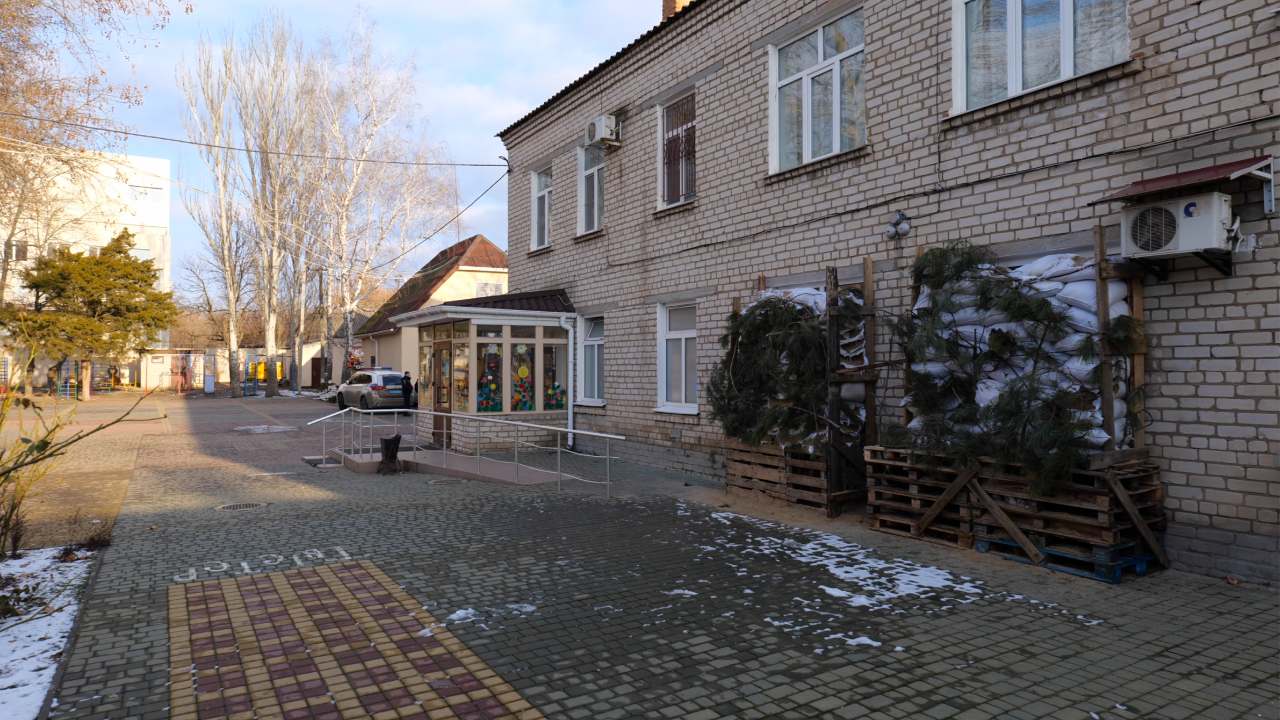 The bagged up “safe room” of the school: simple protection from blastwaves
The bagged up “safe room” of the school: simple protection from blastwaves
As you can see, when the sirens wail, everyone heads for the shelter. When it’s quiet, we try to work. As scary as it sounds, I guess we’re getting a little used to the war. We don’t react as harshly or fearfully as we did in the beginning.
We teach in this constant state of stress because air raid sirens go off day and night. We have these “status” children who live here around the clock: the orphans and others I mentioned. It’s definitely hard, but we’ve adapted, and the children have adapted too. They understand that they need to go down to the shelter all the time.
In the dormitory building, we’ve set up “two walls” where they can at least go and sit down, especially at night when it’s cold. We also have designated shelters in both dorms for nighttime. During the day, of course, they go down to the main shelter every time there’s an air raid. The rest of the time, we try to have some semblance of normalcy and continue teaching.
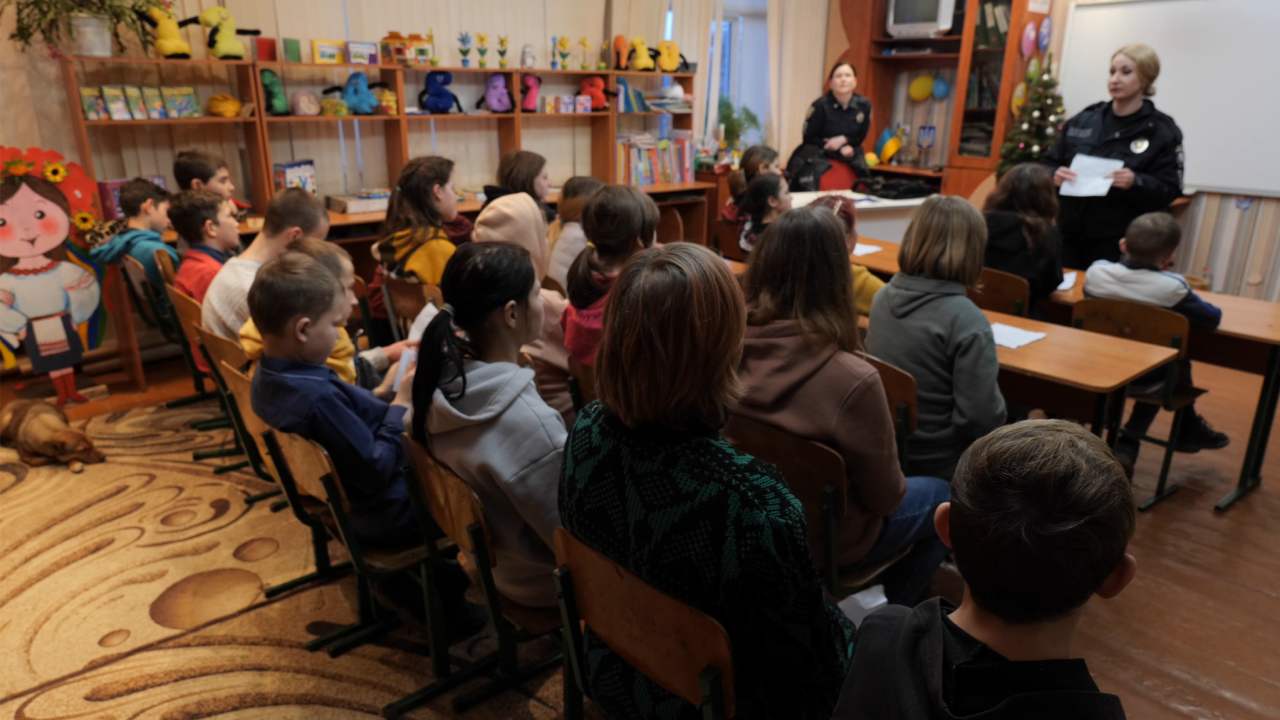 Safety awareness day at Voznesensk Special School with the Police
Safety awareness day at Voznesensk Special School with the Police
This is our story, not a happy one, but hopefully with a good ending. We believe the worst is behind us, and that they won’t come back here again.
A Personal Message of Hope and Gratitude
The war has taken a heavy toll on Voznesensk, but it has also revealed the strength and unity of our community. We are forever grateful to the brave soldiers who defended our town, the tireless volunteers who provided support, and the countless individuals who offered help and kindness during our darkest days.
We don’t know what tomorrow holds. The war continues to cast a long shadow. But one thing is certain: the spirit of Voznesensk, the spirit of its people, will not be broken. There’s a new normal here now. Even amidst the wail of sirens we will continue to stand strong, to rebuild, and to educate the next generation for a future free from war.
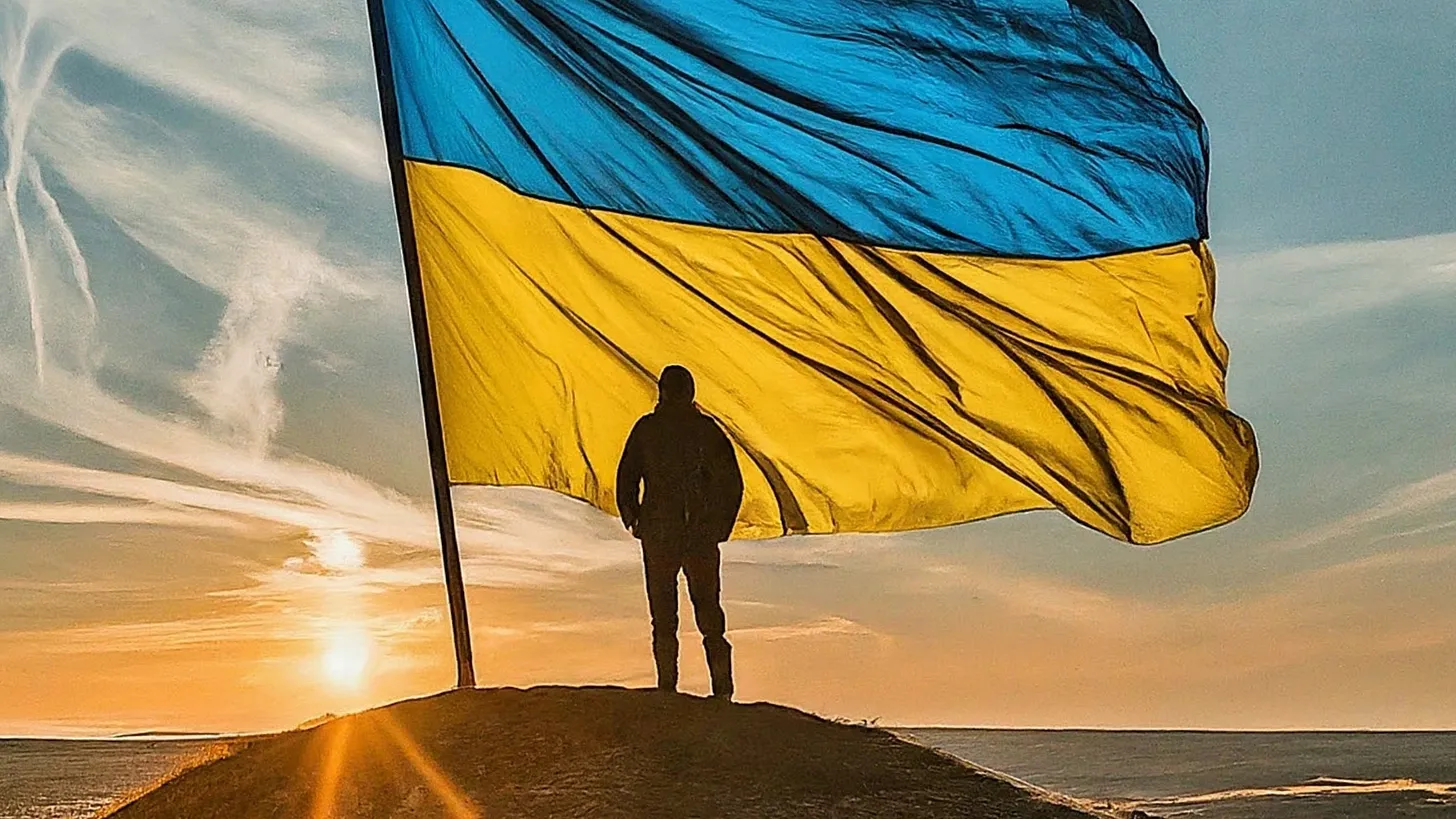 Over 10 years since the initial russian invasion in 2014, Ukraine still stands
Over 10 years since the initial russian invasion in 2014, Ukraine still stands
Afterword
If you are reading this, somewhere in the world, far from the horrors of war, please know that your support, however big or small, means the world to people in Ukraine. Thank you for standing with Ukraine. Thank you for believing in our common peaceful future.
If you have the means, consider donating to the Colors of Hope charity foundation that helps this and other schools in the region.
